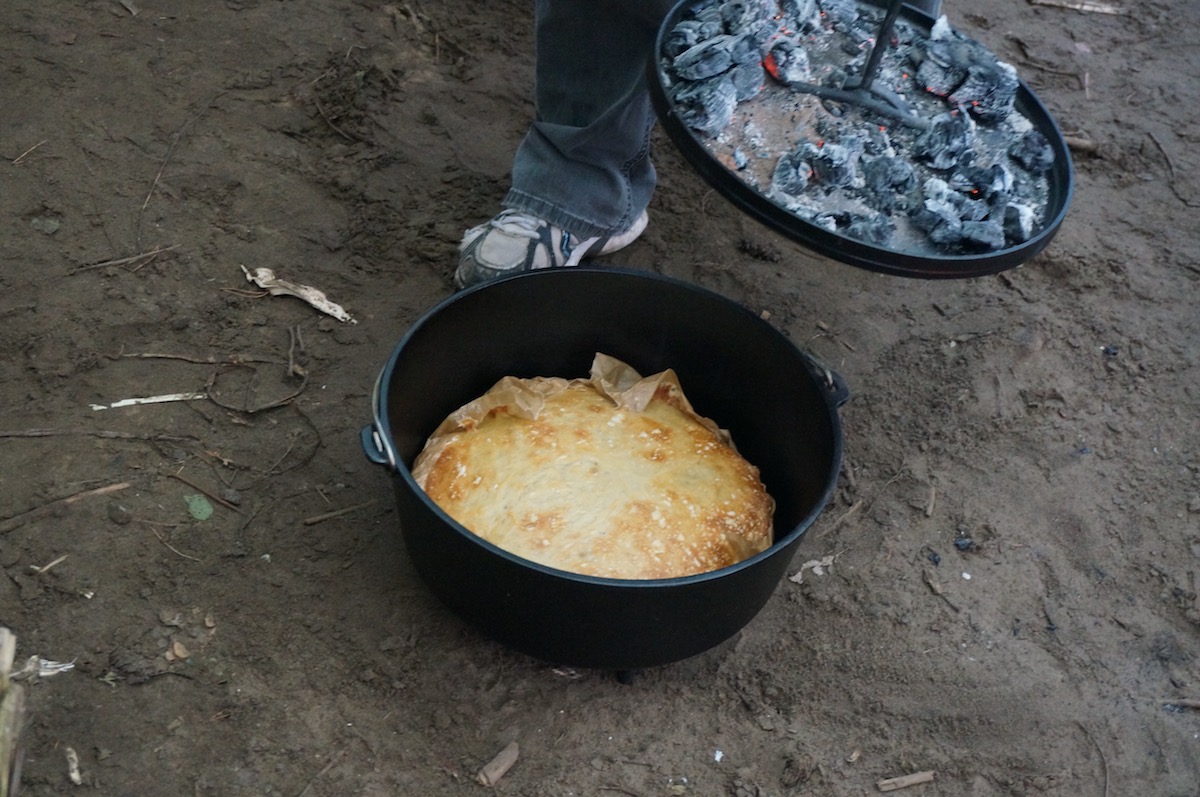How to Get Started with Dutch Oven Cooking

Cooking is a very beneficial skill, especially if you want to have tasty food! It’s also great for social and even survival situations as well as saving money on eating out.
More and more people cook themselves because it can be a great way to eat healthily, we’re in charge of what we put into our bodies.
My family loves Dutch Oven cooking, there’s something about producing great food on a fire (coals) and then the social experience that goes with it.
We have a couple of small Dutch Ovens here in the Outdoor Revival office just in case we go out and there’s an opportunity to cook while we’re out.

For those looking to cook more, particularly outdoors, knowing how to use a Dutch oven can be really useful. The main reason is that someone who can use a Dutch oven can cook anywhere and everywhere: inside or outside, on a stove or over a fire. For those who are unaware of just how to use a Dutch Oven, here’s a rundown.
There are many different kinds of Dutch ovens. Some are ceramic, others are clay or aluminum, then there are those that are cast iron. The cast iron Dutch ovens are by the most commonly used, and they can be used in the most variety of ways. Cast iron Dutch ovens come in many different shapes and sizes. If you are cooking various things of all different sizes; it may be necessary to have different sizes of Dutch ovens.
Some Dutch Ovens include a lid with a lip around the edge. The purpose of the lip is to hold coals and stop them falling off the lid, heat comes from both the bottom and the top. With the coals cooking from the top down and the bottom up, it’s like cooking in a Convection oven.
There are also some Dutch ovens that have feet incorporated into their design so that you can place it on a bed of coals without the coals touching the bottom of the pot, meaning that the food doesn’t burn. Another reason for the legs is that it does make it easy to stack multiple Dutch ovens on top of each other and cook an entire meal.

The drawback of these kinds of Dutch ovens is that it can be hard to fit them inside of a conventional oven due to their increased size, but really that’s a minor inconvenience.
There is another type of Dutch oven that does not have a lip on the lid. This is good for those who like to use their Dutch ovens for cooking both indoors and outdoors. This way there’s no lip to get in the way when cooking inside, but if someone is savvy enough, they can improvise when using it to cook outdoors.
While using a Dutch oven is a great way to cook, it can be hard to keep cookware in good shape when it’s often used outside. Cleaning opportunities are very limited when camping. For those who are unfamiliar with Dutch ovens, it’s suggested to use them inside until you get used to it. Then the oven can be used outdoors with confidence.

Also, there are Dutch oven lids that have little spikes on them, designed so that condensation will drip back down into the pot and not stay on the lid, causing the oven to rust.
If you plan on using your Dutch oven to cook outdoors, it’s a good idea to get a lid lifter. Also, when cooking with charcoal, you need to know how to handle the coals safely and efficiently, this is really important as the coals dictate the temperature. Lots of people use charcoal briquets so that can judge the heat easier, but with some experience, you can use the coals and embers from your campfire

A Dutch oven is wonderful for people who like to cook both indoors and outdoors; knowing which type of Dutch oven to get and how to use it properly is something that any person who is new to using Dutch ovens should research.
If you have any comments then please drop us a message on our Outdoor Revival facebook page
If you have a good story to tell or blog let us know about it on our FB page, we’re also happy for article or review submissions, we’d love to hear from you.
We live in a beautiful world, get out there and enjoy it.
Outdoor Revival – Reconnecting us all with the Outdoors
